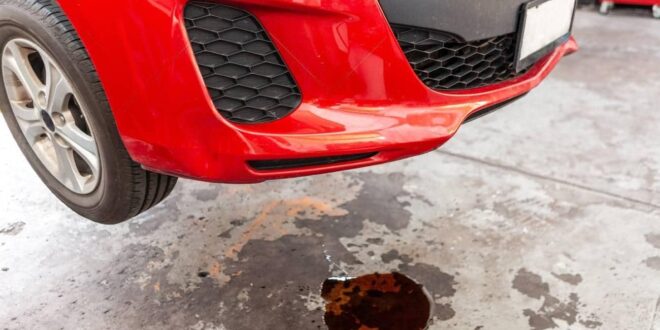Oil leaks in cars can be annoying and cause worry. Oil leaks can cause expensive repairs and engine damage if they are ignored. But you can fix these leaks and maintain the smooth operation of your car with a little knowledge and some simple troubleshooting. We’ll look at a few straightforward fixes for car oil leaks in this blog article. Now let’s get started!
Identifying the Leak
Finding the cause of an oil leak is the first step in fixing it. The following indicators could help you in determining the leak’s location:
Oil spots under your car: It’s undeniable there is a leak if you see oil spots on the ground where your car is parked.
Burning oil smell: An oil leak may be present if you notice a strong, burnt oil odor while driving or after parking your car.
Low oil levels: Use the dipstick to check the oil level in your car on a regular basis. A leak may be present if you observe a noticable reduction in oil levels between oil changes.
Common Causes of Oil Leaks
It will be easier for you to avoid oil leaks in the future if you are aware of their common causes. Here are a handful of the culprits:
Worn-out gaskets or seals: Oil leaks may occur as a result of seals and gaskets deteriorating over time. Covers, joints, and connections—which include the gaskets on the oil pan, valve cover, and camshaft—are frequently inspected.
Loose or damaged oil filter: Oil can seep out due to an oil filter that is broken or loose. When changing the oil, make sure the oil filter is tightened properly.
Faulty oil drain plug: Leaks may occur if the washer is damaged or if the oil drain plug is not tightened properly.
Solutions for Car Oil Leaks
You can take the necessary action once you have located the oil leak’s source. Here are a few easy fixes to think about:
Tighten loose components: Tightening the valve cover or oil pan bolts, which may be to blame for the leak, may stop it from happening. But take care not to overtighten as this could harm the seal or gasket.
Replace worn-out gaskets or seals: It is essential to replace the gaskets and seals if they are worn out or broken. To guarantee correct installation, refer to your car’s handbook or get expert assistance. You can reach a specialist by going to this page Schedule an Inspection Appointment
Check the oil filter: Look for any indications of damage or looseness in the oil filter. If necessary, put in a new one and make sure it’s tightened all the way.
Repair or replace the oil drain plug: To stop leaks, consider replacing the washer and the oil drain plug if they are worn out or broken.
Although they can be inconvenient, car oil leaks can be fixed with the right approach. You can save expensive repairs and potential engine damage by locating the leak’s source and taking the necessary steps. Remember, it’s always preferable to see a skilled technician if you’re not confident you can handle the problem yourself. Your car will continue to run smoothly for many years if you perform routine maintenance and quickly address any oil leaks.
 Spot Dem Everything About Cars
Spot Dem Everything About Cars



